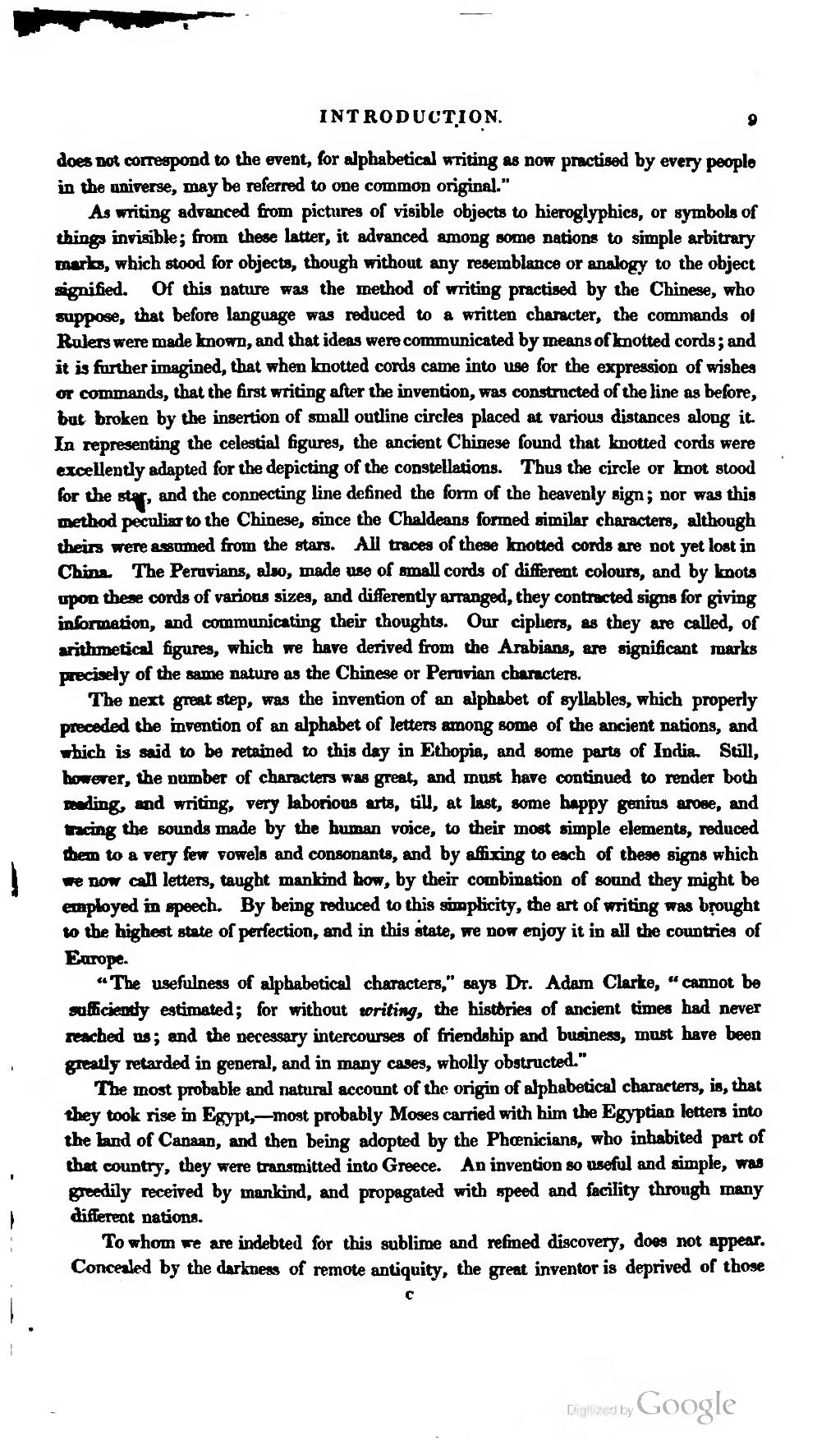does not correspond to the event, for alphabetical writing as now practised by every people in the universe, may be referred to one common original."
As writing advanced from pictures of visible objects to hieroglyphics, or symbols of things invisible; from these latter, it advanced among some nations to simple arbitrary marks, which stood for objects, though without any resemblance or analogy to the object signified. Of this nature was the method of writing practised by the Chinese, who suppose, that before language was reduced to a written character, the commands of Rulers were made known, and that ideas were communicated by means of knotted cords; and it is further imagined, that when knotted cords came into use for the expression of wishes or commands, that the first writing after the invention, was constructed of the line as before, but broken by the insertion of small outline circles placed at various distances along it In representing the celestial figures, the ancient Chinese found that knotted cords were excellently adapted for the depicting of the constellations. Thus the circle or knot stood for the star, and the connecting line defined the form of the heavenly sign ; nor was this method peculiar to the Chinese, since the Chaldeans formed similar characters, although theirs were assumed from the stars. All traces of these knotted cords are not yet lost in China. The Peruvians, also, made use of small cords of different colours, and by knots upon these cords of various sizes, and differently arranged, they contracted signs for giving information, and communicating their thoughts. Our ciphers, as they are called, of arithmetical figures, which we have derived from the Arabians, are significant marks precisely of the same nature as the Chinese or Peruvian characters.
The next great step, was the invention of an alphabet of syllables, which properly preceded the invention of an alphabet of letters among some of the ancient nations, and which is said to be retained to this day in Ethopia, and some parts of India. Still, however, the number of characters was great, and must have continued to render both leading, and writing, very laborious arts, till, at last, some happy genius arose, and tracing the sounds made by the human voice, to their most simple elements, reduced them to a very few vowels and consonants, and by affixing to each of these signs which we now can letters, taught mankind how, by their combination of sound they might be employed in speech. By being reduced to this simplicity, the art of writing was brought to the highest state of perfection, and in this state, we now enjoy it in all the countries of Europe.
"The usefulness of alphabetical characters," says Dr. Adam Clarke, "cannot be sufficiently estimated; for without writing, the histories of ancient times had never reached us; and the necessary intercourses of friendship and business, must have been greatly retarded in general, and in many cases, wholly obstructed."
The most probable and natural account of the origin of alphabetical characters, is, that they took rise in Egypt,—most probably Moses carried with him the Egyptian letters into the land of Canaan, and then being adopted by the Phœnicians, who inhabited part of that country, they were transmitted into Greece. An invention so useful and simple, was greedily received by mankind, and propagated with speed and facility through many different nations.
To whom we are indebted for this sublime and refined discovery, does not appear. Concealed by the darkness of remote antiquity, the great inventor is deprived of those
